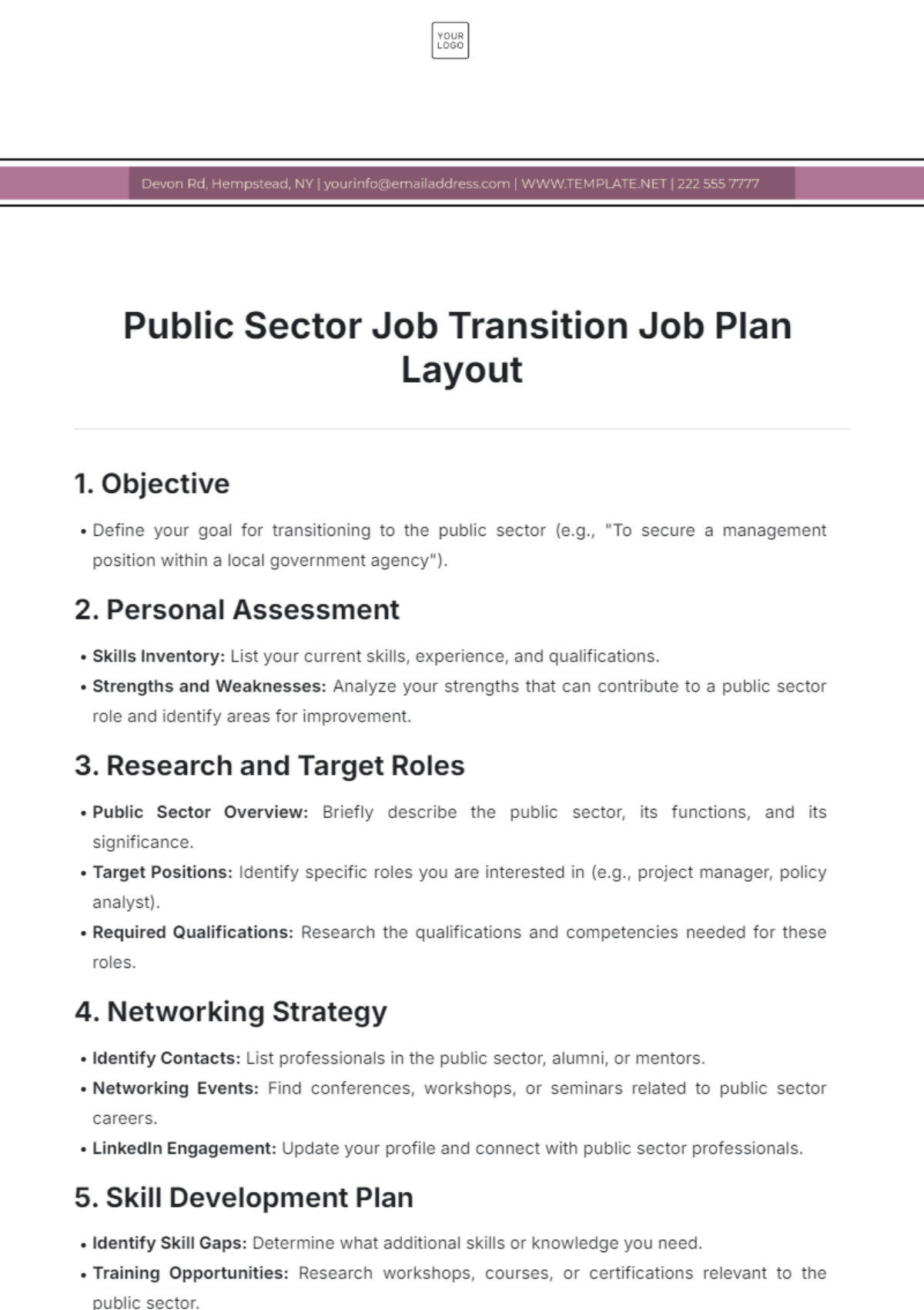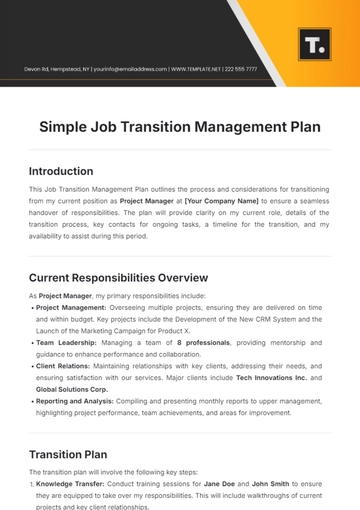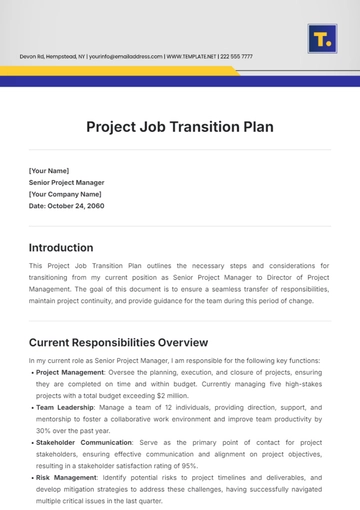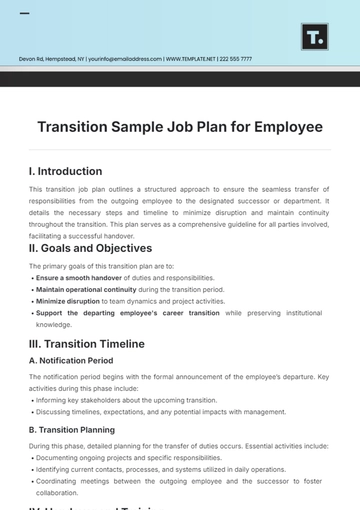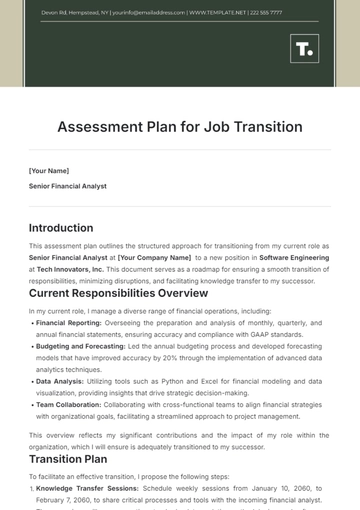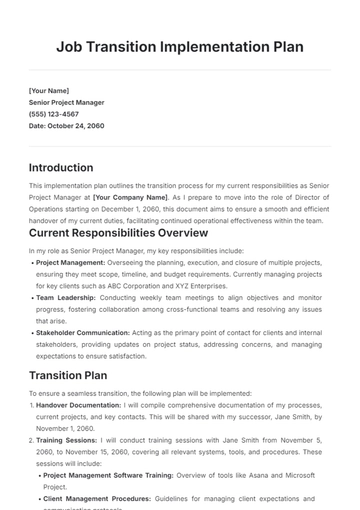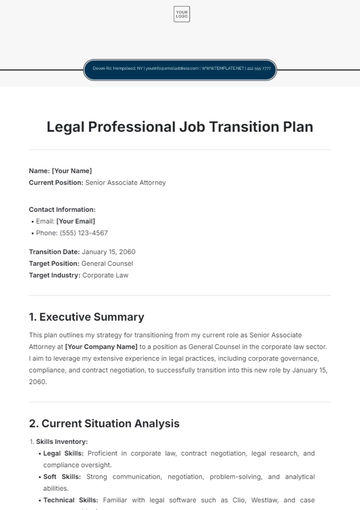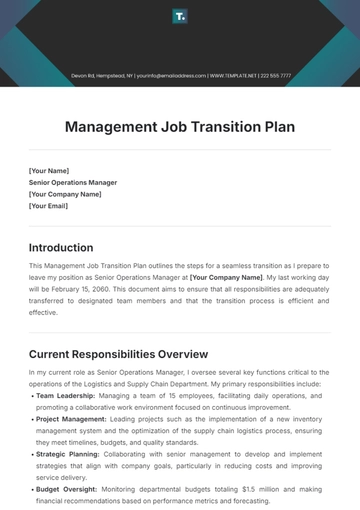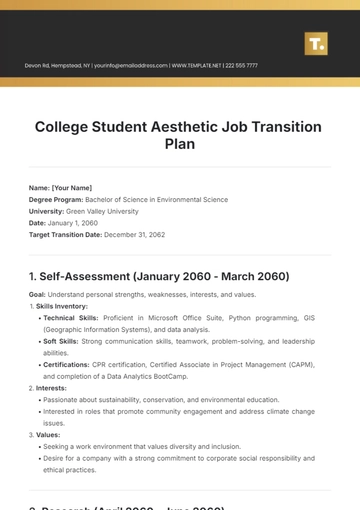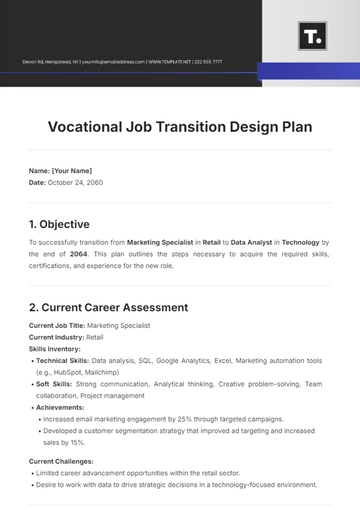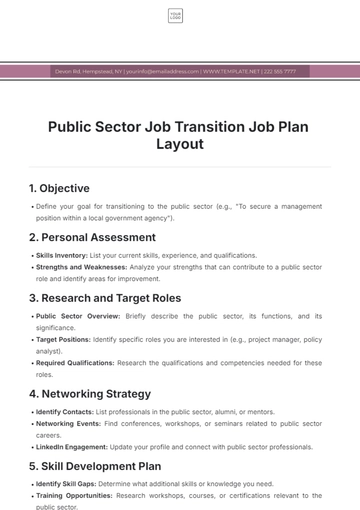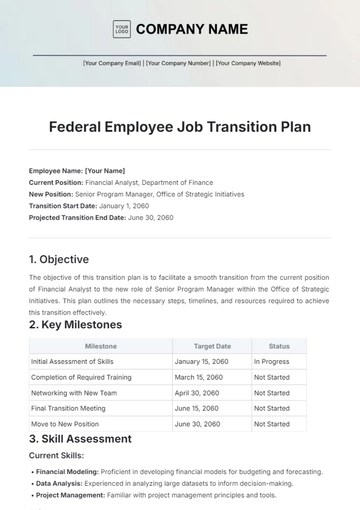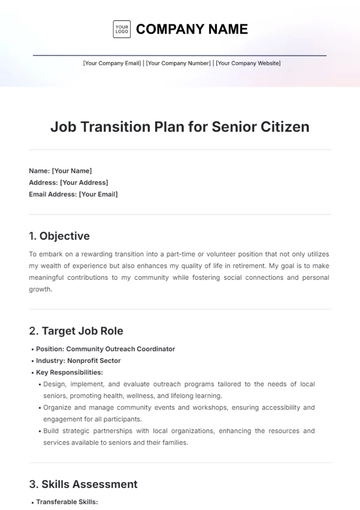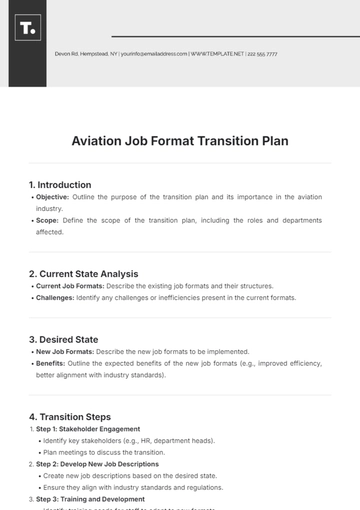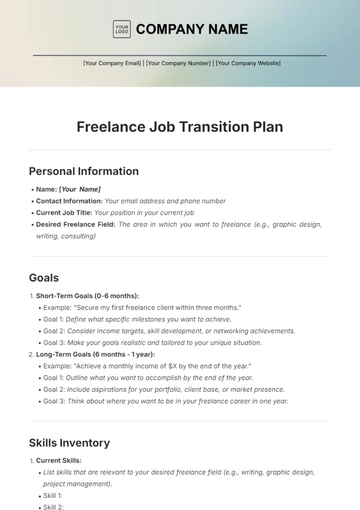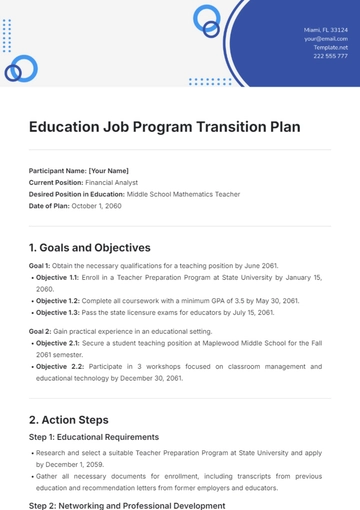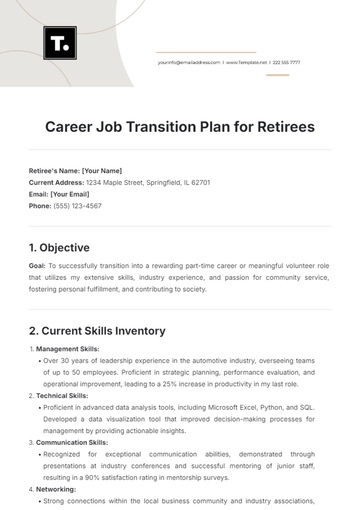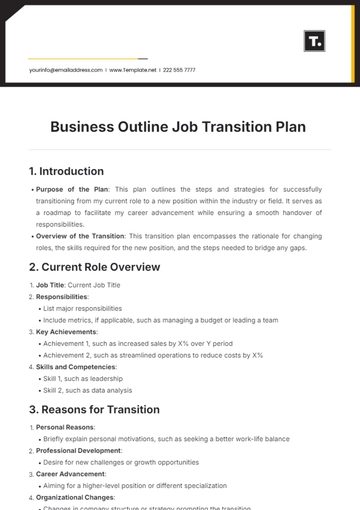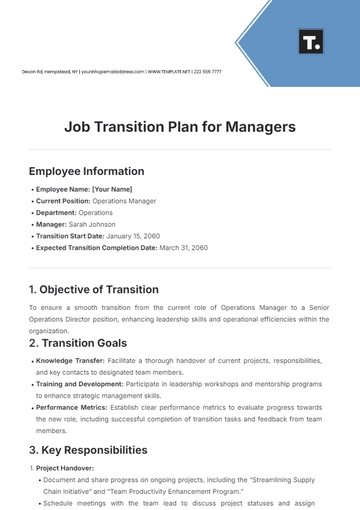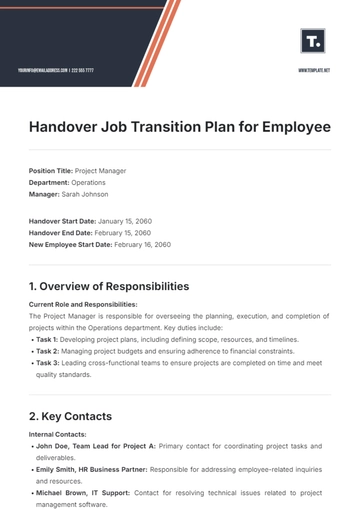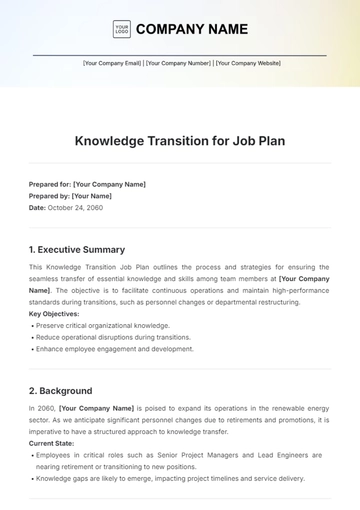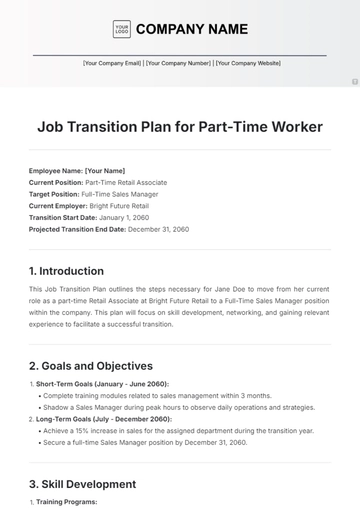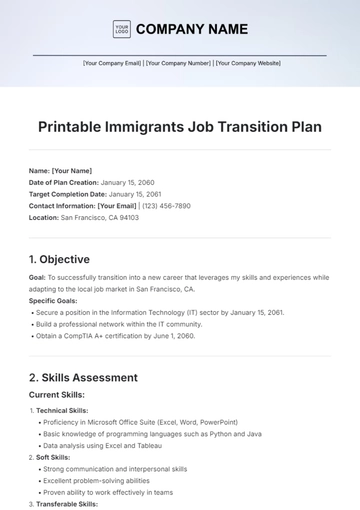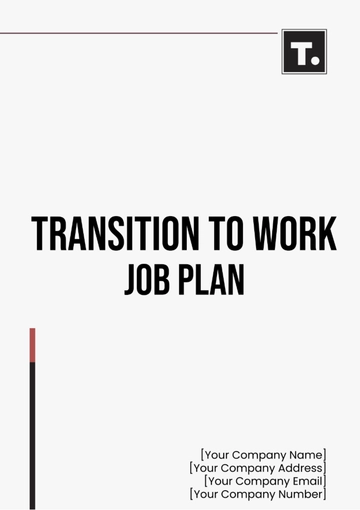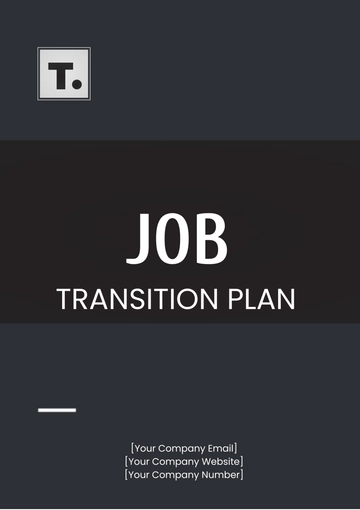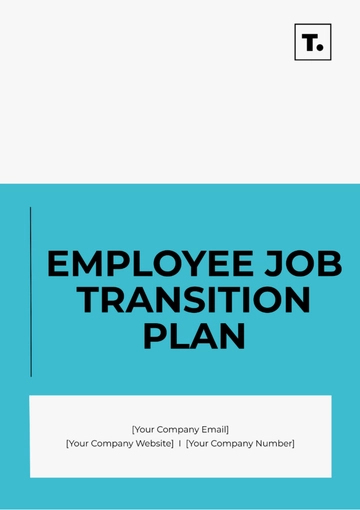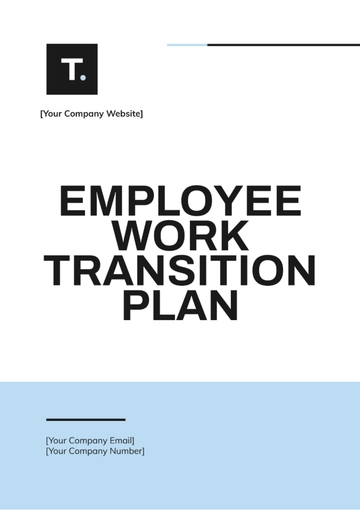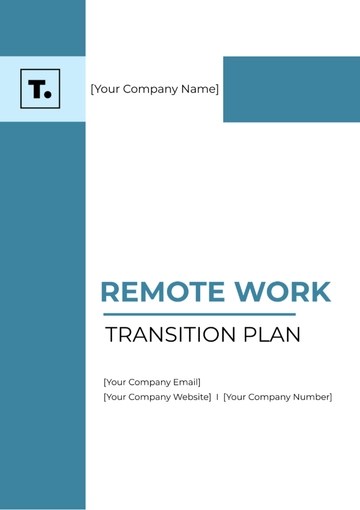Public Sector Job Transition Job Plan Layout
1. Objective
2. Personal Assessment
Skills Inventory: List your current skills, experience, and qualifications.
Strengths and Weaknesses: Analyze your strengths that can contribute to a public sector role and identify areas for improvement.
3. Research and Target Roles
Public Sector Overview: Briefly describe the public sector, its functions, and its significance.
Target Positions: Identify specific roles you are interested in (e.g., project manager, policy analyst).
Required Qualifications: Research the qualifications and competencies needed for these roles.
4. Networking Strategy
Identify Contacts: List professionals in the public sector, alumni, or mentors.
Networking Events: Find conferences, workshops, or seminars related to public sector careers.
LinkedIn Engagement: Update your profile and connect with public sector professionals.
5. Skill Development Plan
Identify Skill Gaps: Determine what additional skills or knowledge you need.
Training Opportunities: Research workshops, courses, or certifications relevant to the public sector.
6. Application Strategy
Resume and Cover Letter: Tailor your resume and cover letter for public sector positions.
Online Job Boards: List specific job boards for public sector jobs (e.g., USAJOBS, government websites).
Application Tracking: Create a system to track jobs you apply for and their statuses.
7. Interview Preparation
Common Interview Questions: Research typical interview questions for public sector roles.
Mock Interviews: Practice with friends or mentors to refine your responses and gain confidence.
STAR Technique: Use the Situation, Task, Action, and Result framework to structure your answers.
8. Follow-Up Strategy
9. Timeline
10. Evaluation and Adjustment
Plan Templates @ Template.net
